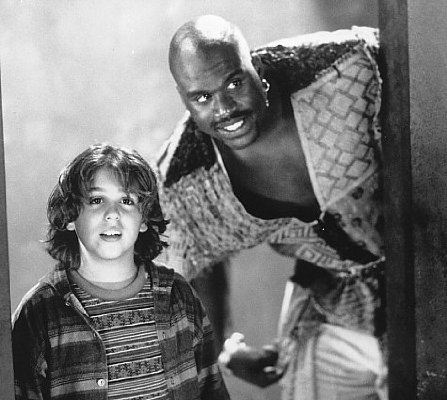
There was a show from England.
The Incredibly Strange Film Show. It was probably twenty years ago.
On one episode, they interviewed Ray Dennis Steckler, director of
The Incredibly Strange Creatures Who Stopped Living and Became Mixed-Up Zombies,
Rat Fink a Boo Boo,
The Thrill Killers,
Blood Shack, and a number of other movies. His work was extemporaneous. He generally worked without a completed script. He explained that, "every time we have a completed script, the movie never seems to get made because we can never afford what's on the script. You know, you need all these things, then you spend all this time locating these things that you need for the movie, and by the time you get all that done, it's too late to make the movie."
Ed Wood, Jr, wanted to be like Orson Welles. Ray Dennis Steckler was more like Eisenstein or Pudovkin--more of an Alfred Hitchcock. The poor man's Brian de Palma, perhaps. His movies were much more visual. He made pretty good use of montage. If things had been a little different, he might have been another Robert Rodriguez.
The Incredibly Strange Film Show was hosted by Jonathan Ross. It's available on You Tube.
At a couple of points in the interviews, Steckler seems to catch himself taking his work too seriously. He quickly snaps out of it. You can't make any kind of a movie without taking it seriously, but you don't want to get caught taking yourself seriously.
I've seen it happen.
I saw Paul Michael Glaser on Charles Grodin's cable talk show after he made the movie
Kazaam.Glaser had directed other movies, but this was the first one that he worked on from start to finish, writing the script and directing all aspects of the movie. He was the auteur. He seemed quite proud and grimly serious. It was a little embarrassing.
I was at my brother's place when I saw the interview and he commented on it.
"Everybody's proud of their work," I said. There are people who are proud of having worked their whole lives in the lumber mills. I've met people who were proud of having never held any job for more than two months. I took perverse pride in being a car wash attendant. And the man did make a movie, after all.
As it happened,
Kazaam grossed $19 million, a bit less than its cost, and got terrible reviews.

The child star in it was cute enough. He's still an actor. He's now shaved his head and he's covered with tattoos. You'd think that would be an impediment to an acting career.
Charles Grodin, Bill Cosby, other family filmsI found Kazaam on a list of worst films, but it seemed to have done pretty well compared to most of the others on the list. Much better than Bill Cosby's family films,
Ghost Dad and
Leonard Part 6.
Cosby wrote and produced
Leonard Part 6, but tried to blame the director for it being so terrible. It was one of the worst movies ever made. No director could have saved it. And how does Cosby explain the equally bad
Ghost Dad, directed by Sidney Poitier?
Bill Cosby was hired to do ads for TCM, Ted Turner's classic movie cable station. This in spite of his role in two of the worst movies ever made, and in spite of the fact that nearly every movie shown on the channel either had an all-white cast or was explicitly racist.
The commercials were in black and white, meant to look like an old
film noir. Bill Cosby tells us that he likes classic gangster movies because they don't use obscene language like in movies today.
Well. If the only good thing you can think of to say about a movie is that there were no dirty words in it, I'd say you probably didn't like it very well. In fact, that's pretty much all they said in the ads for Cosby's two movies. They couldn't quote reviews or show clips without revealing how terrible they were, so they interviewed people coming out of the theaters. The only thing they could say was that the movies weren't overtly offensive.
"Well, there wasn't any nudity."
Apparently Charles Grodin took offense at Cosby's TCM ads. He gave an angry commentary on his show. He pointed out that Cosby has made a career of presenting himself as a devoted family man when he secretly had an illegitimate daughter who he sent to prison when she threatened to sell her story to the
Inquirer. This was before several women made rape accusations which Cosby denied. Who was he to complain about bad words?






